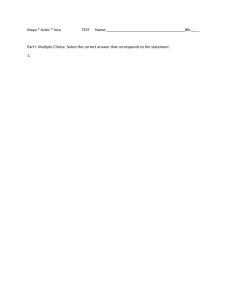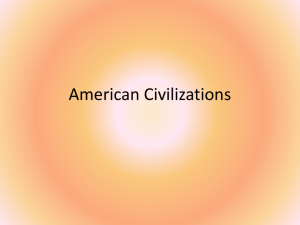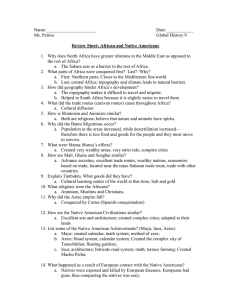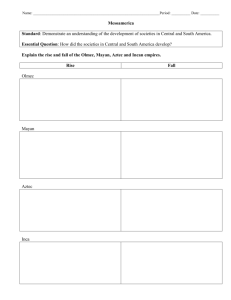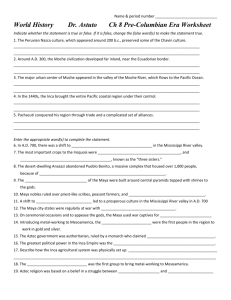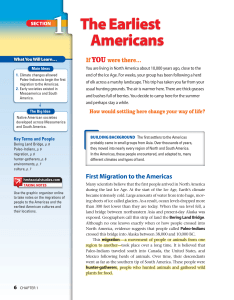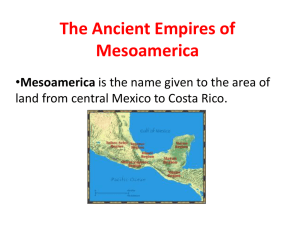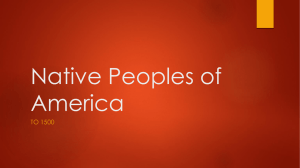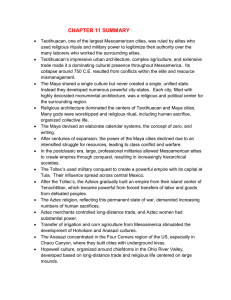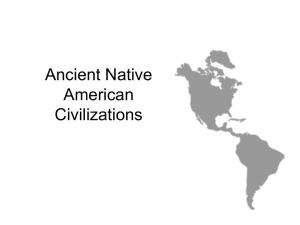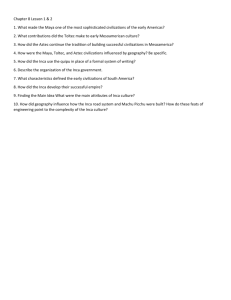110A Quiz American Civilizations - Leleua Loupe
advertisement
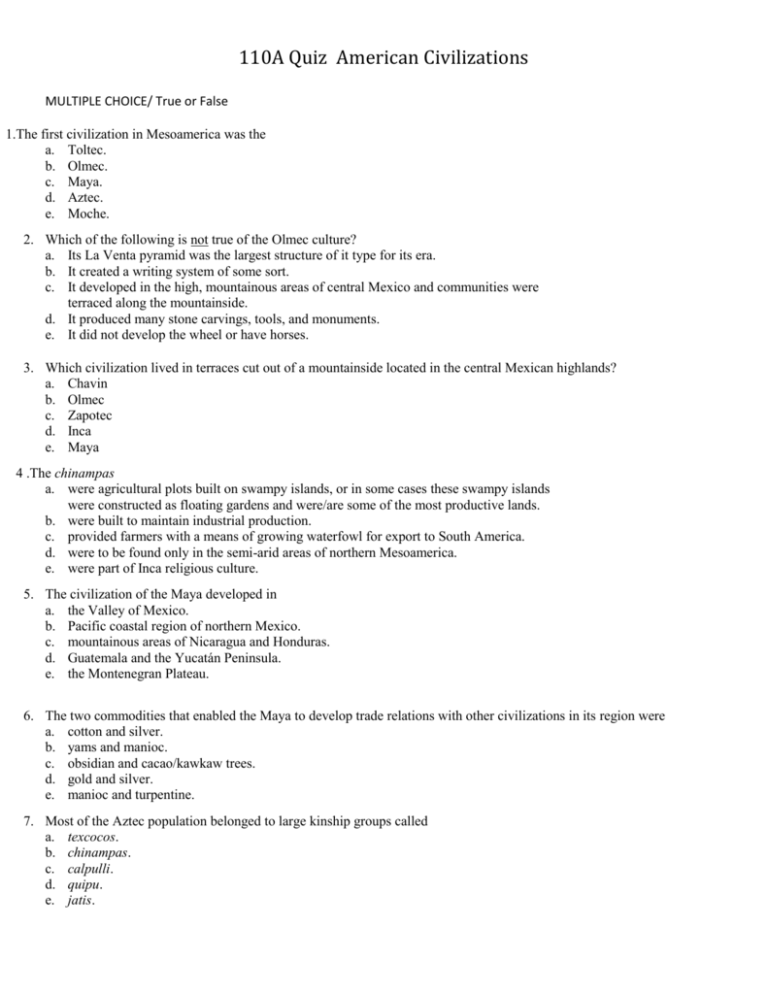
110A Quiz American Civilizations MULTIPLE CHOICE/ True or False 1.The first civilization in Mesoamerica was the a. Toltec. b. Olmec. c. Maya. d. Aztec. e. Moche. 2. Which of the following is not true of the Olmec culture? a. Its La Venta pyramid was the largest structure of it type for its era. b. It created a writing system of some sort. c. It developed in the high, mountainous areas of central Mexico and communities were terraced along the mountainside. d. It produced many stone carvings, tools, and monuments. e. It did not develop the wheel or have horses. 3. Which civilization lived in terraces cut out of a mountainside located in the central Mexican highlands? a. Chavin b. Olmec c. Zapotec d. Inca e. Maya 4 .The chinampas a. were agricultural plots built on swampy islands, or in some cases these swampy islands were constructed as floating gardens and were/are some of the most productive lands. b. were built to maintain industrial production. c. provided farmers with a means of growing waterfowl for export to South America. d. were to be found only in the semi-arid areas of northern Mesoamerica. e. were part of Inca religious culture. 5. The civilization of the Maya developed in a. the Valley of Mexico. b. Pacific coastal region of northern Mexico. c. mountainous areas of Nicaragua and Honduras. d. Guatemala and the Yucatán Peninsula. e. the Montenegran Plateau. 6. The two commodities that enabled the Maya to develop trade relations with other civilizations in its region were a. cotton and silver. b. yams and manioc. c. obsidian and cacao/kawkaw trees. d. gold and silver. e. manioc and turpentine. 7. Most of the Aztec population belonged to large kinship groups called a. texcocos. b. chinampas. c. calpulli. d. quipu. e. jatis. 110A Quiz American Civilizations 8. Which of the following was not a characteristic of the large kinship groups of the Aztecs? a. The Chief’s were the intermediaries between the people and the government. b. They often specialized in some particular area of responsibility. c. They contained subdivisions of smaller family units. d. Women were required to work in the fields five days each week. e. In general, males were the dominant gender though evidence suggests women were equally valued. 9. Aztec writing a. was phonetic. b. may have been the result of contact with traders from the Aleutians. c. resembled ancient Greek in its organization. d. was copied from Egyptian hieroglyphics. e. was based upon hieroglyphs that represented an object or concept. 10. This Aztec capital was established on an island in the middle of Lake Texcoco. a. Tikal b. Palenque c. Uxmal d. Tenochtitlán e. Chichen Itzá 11. In South America, by 2000 B.C.E., peoples _____________ allowing for or providing evidence of Polynesian contact prior to European contact in the Americas. a. had discovered the smelting of iron. b. had domesticated wheat for making of bread, c. were sailing the Pacific in wind-powered balsa wood rafts. d. had developed a complex writing system. e. were using the wheel in transportation. 12. Who was the Inka king who began the conquests that led to the creation of their empire? a. Pizarro b. Huayna Inca c. Pachakuti d. Topa Inca e. Montezuma 13. The civilization of the Inka a. constructed an impressive system of roads and bridges that connected trade from the coast, through the central valley to the mountains. b. employed a force of highly-paid workers to construct the structures that it produced. c. offered all women nothing but a life of domestic service restricted to the home. d. developed an abundant lowland valley community at Machu Picchu. e. routinely executed all war prisoners its army captured. 14. TRUE(A)/FALSE(B)The Pyramid of the Sun was built by the people of Teotihuacán in the fifth century C.E. 15. TRUE(A)/FALSE(B)The first urban settlements in South America were established as early as 3500 B.C.E., much earlier than the earliest known cities in Mesoamerica. 16. TRUE(A)/FALSE(B) The Inka had no writing system, but kept records using a system of knotted strings called quipu.
